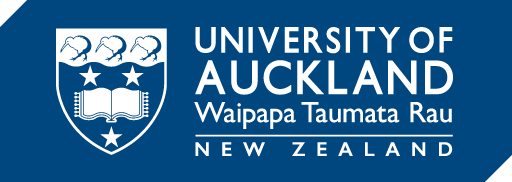by crus754 | Apr 30, 2009
SPEAKER: Matthew Ryan (Economics)
DAY & TIME: 11am, 30 April
VENUE: OGGB Room 6115
TITLE: “Stochastic Choice and Expected Utility”
DESCRIPTION/ABSTRACT: This talk will survey some recent developments in the theory of probabilistic choice, a branch of decision theory that treats the act of choice as inherently stochastic. Much of this theory has applications in econometrics. For example, McFadden’s logit model is based on a famous result by R. D. Luce. Most stochastic choice models are probabilistic extensions of models of utility over deterministic objects. Two recent papers (one by Dagsvik in Mathematical Social Sciences in 2008, and another by Gul and Pesendorfer in Econometrica in 2006) extend these ideas to choice amongst gambles, obtaining stochastic versions of expected utility. This talk will mostly discuss the contribution by Dagsvik. I hope to give a follow-up talk to the MSS Group later in May, which will discuss an alternative proof of one of Dagsvik’s results.
by crus754 | Apr 23, 2009
Speaker: Reyhaneh Reyhani
Affiliation: Computer Science Department, The University of Auckland
Title: New measures of the difficulty of manipulation of voting rules
Date: Monday, 27 Apr 2009, 3:00 pm
Location: Room 401
Voting systems as a method for aggregating different opinions of group members are used extensively in different fields. Except for dictatorships, all voting systems are susceptible to strategic manipulation. From the perspective of mechanism design, it is generally regarded desirable to minimize the occurrence of strategic manipulation of voting rules.
One method for designing a safer voting system against strategic manipulation is to find rules that minimize the number of situations in which manipulation can succeed.
In this talk, we introduce new measures of manipulability of anonymous voting rules and argue for their superiority over some commonly used measures. We give a simple common framework that describes these measures and connects them to recent literature. We discuss their computation and present numerical results that allow for comparison of various common voting rules. This is joint work with Geoffrey Pritchard and Mark Wilson.
Finally, I will mention some issues that I intend to consider in future for my PhD thesis.
by crus754 | Mar 24, 2009
Two computer scientists (Yoav Shaham and Kevin Leyton-Brown) have recently produced a book on multi-agent systems, a spinoff from which is a self-contained introduction to game theory aimed at interdisciplinary users. Check it out and give your feedback! It has received excellent reviews so far.
by crus754 | Mar 23, 2009
Speaker: Geoff Pritchard
Affiliation: The University of Auckland
Title: Impartial-culture asymptotics: a central limit theorem for manipulation of elections
Date: Monday, 30 Mar 2009
Time: 4:00 pm
Location: Room 401 (small math seminar room)
We consider the problem of manipulation of elections using positional voting rules under Impartial Culture voter behaviour. We consider both the logical possibility of coalitional manipulation, and the number of voters that must be recruited to form a manipulating coalition. It is shown that the manipulation problem may be well approximated by a very simple linear program in two variables. This permits a comparative analysis of the asymptotic (large-population) manipulability of the various rules. It is seen that the manipulation resistance of positional rules with 5 or 6 (or more) candidates is quite different from the more commonly analyzed 3- and 4-candidate cases.
This is joint work with Mark Wilson, to appear in Mathematical Socal Sciences. Slides for the talk are available.
by crus754 | Mar 23, 2009
Noam Nisan is one of the authors of the recent book Algorithmic Game Theory and his blog at http://agtb.wordpress.com/ is focused on this topic. It should be of interest to members of this group. He has a recent post on the history of this very active new field, in which he says:
“As the Internet was growing around the mid-to-late 1990’s, several threads of research emerged that somehow connected three key elements: Computer Science, Economics & Game-Theory, and the Internet. Within the networking community, several researchers started worrying about the non-cooperative nature of the Internet, and started considering the issue of incentives. Within the AI community, the coordination between multiple software “agents” became an area of study. Electronic commerce started flourishing, and the underlying basic questions started emerging. A few economists started studying Internet-related economic questions. Around the late 1990’s the different groups of people with these different motivations started talking to each other, and a joint field started emerging. “

Recent Comments